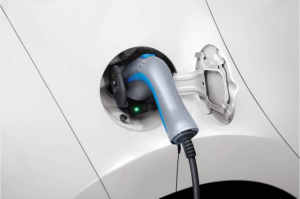1. How to correctly control the charging time?
During the use, accurately grasp the charging time according to the actual situation, and grasp the charging frequency by referring to the normal use frequency and driving mileage. During normal driving, if the red light and yellow light of the electricity meter are on, it should be charged; If only the red light is left on, stop the operation and charge as soon as possible, otherwise excessive discharge of the battery will seriously shorten its life. After being fully charged, the battery will be charged after a short running time, and the charging time should not be too long, otherwise excessive charging will occur and the battery will heat up. Overcharging, overdischarging and undercharging will shorten the battery life. Generally, the average charging time of the battery is about 8-10 hours. If the battery temperature exceeds 65 ℃ during charging, stop charging.
2. How to protect the charger?
Keep the charger ventilated during charging, otherwise not only the life of the charger will be affected, but also the charging state may be affected due to thermal drift.
3. What is “regular deep discharge”
A regular deep discharge of the battery is also conducive to “activating” the battery, which can slightly increase the capacity of the battery.
4. How to avoid the plug heating during charging?
Looseness of 220V power plug or charger output plug, oxidation of contact surface and other phenomena will cause the plug to heat up. If the heating time is too long, the plug will be short circuited or poorly contacted, which will damage the charger and battery. If the above conditions are found, the oxide shall be removed or the connector shall be replaced in a timely manner.
5. Why should I charge every day?
Charging every day can make the battery in a shallow cycle state, and the battery life will be extended. Most chargers may charge 97%~99% of the battery after the indicator light changes to indicate full charge. Although only 1%~3% of the battery is under charged, the impact on the running ability can be almost ignored, but it will also form under charge accumulation. Therefore, after the battery is fully charged and the lamp is changed, the floating charge should be continued as far as possible.
6. What happens to power loss during storage?
It is strictly forbidden to store the battery in a state of power loss. Power loss state means that the battery is not charged in time after use. When the battery is stored in the state of power loss, it is easy to sulfate. The lead sulfate crystals attach to the electrode plate, which will block the electric ion channel, causing insufficient charging and battery capacity decline. The longer the power loss state is idle, the more seriously the battery is damaged. Therefore, when the battery is idle, it should be recharged once a month to better maintain the battery’s health.
7. How to avoid high current discharge?
When starting, carrying people and going uphill, the electric vehicle shall not step on the accelerator violently to form instantaneous large current discharge. High current discharge will easily lead to lead sulfate crystallization, which will damage the physical properties of battery plates.
8. What should be paid attention to when cleaning electric vehicles?
The electric vehicle shall be washed according to the normal washing method. During the washing process, attention shall be paid to prevent water from flowing into the charging socket of the vehicle body to avoid short circuit of the circuit of the vehicle body.
9. How to conduct regular inspection?
In the process of use, if the running range of the electric vehicle suddenly drops by more than ten kilometers in a short time, it is likely that at least one battery in the battery pack has a problem. At this time, you should go to the company’s sales center or agent’s maintenance department for inspection, repair or assembly. This can relatively extend the life of the battery pack and save your expenses to the greatest extent.
Post time: Feb-09-2023






